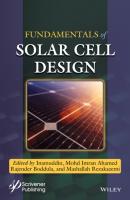Fundamentals of Solar Cell Design. Rajender Boddula
Чтение книги онлайн.

Читать онлайн книгу Fundamentals of Solar Cell Design - Rajender Boddula страница 21
Название: Fundamentals of Solar Cell Design
Автор: Rajender Boddula
Издательство: John Wiley & Sons Limited
Жанр: Физика
isbn: 9781119725046
isbn:
Figure 1.35 BDTT core linked benzotriazole derivatives.
Xiafei Cheng et al. synthesized [33] A-D-A–type conjugated four small donor molecules (Figure 1.36) differing in substitution: DRTT-T (alkylthiophene substituent); DRTT-R (ethylhexyl substituent); DRTT-OR (alkoxythiophene substituent); and DRTT (no substituent). Rhodanine group was attached to BDTT, terminally on either side with the central core thienothiophene moiety. Density Functional Theory informed that DRTT-OR and DRTT mould in to almost planar conformation, while DRTT-T and DRTT-R moulded in to twisted conformation due to the introduction of bulky substituents on TT units. These molecules were found to be soluble green solvents. F-2Cl was selected as small acceptor molecule to blend with the above four donor small molecules. Active blend prepared from F-2Cl and donor molecule provided light absorption covering ~350- to 780-nm region. Simple or conventional device architecture adopted for these molecules as ITO/PEDOT-PSS/Blend of F-2Cl + Donor/PDINDO/ Al, without annealing and with annealing at ~120°C to measure the photo voltaic parameters. DRTT-T exhibited decent efficiency like 9.37%, Voc = 0.95V; Jsc = 15.72 mA/cm2; FF = 62.8%, whereas DRTT-R displayed 10.45% efficiency, Voc = 1.00 V; Jsc = 16.82 mA/cm2; FF = 62.6% using THF solvent. Chloroform as solvent also afforded good results for the same compounds. The other two planar small-molecule donors, DRTT-OR and DRTT, showed satisfactory efficiencies. Twisted nature of the molecules, charge mobility, and film morphology factors are influential in displaying higher efficiencies.
Xinxin Li et al. explained in their paper [34] the synthesis of A-D-A– type small donor molecule (P2TBR; Figure 1.37) for the purpose of fabricating all small-molecule BHJOSCs using IDIC as a small acceptor molecule. P2TBR was a non-fused p-dialkoxybenzene at center core with linearly attached thiophene and then BDTT and rhodanine terminal at both sides of center core. P2TBR and IDIC showed complementarity of absorption in solution phase absorption studies. P2TBR and IDIC blend film, after SV annealing, displayed light absorption in the range ~350 to 750 nm. It was informed that solvent vapor annealing improved intermolecular interactions between donor and acceptor molecules. All small-molecule BHJOSC were fabricated using P2TBR donor and IDIC as acceptor blend, adopting a simple and conventional architecture like: ITO/PEDOT-PSS/P2TBR + IDIC ble3nd/ZnO/Al to determine PV parameters. Excellent efficiency of 11.5% was observed for the device fabricated (as given above) along with Voc = 0.94; Jsc = 17.5 mA/cm2; and FF = 70.5. Authors claim that non-fused, linearly linked, smallmolecule donor with p-dialkoxybenzene core structure has potential to further achieve higher efficiencies.
Figure 1.36 Thienothiophene with BDTT Core linked with rhodanine.
Figure 1.37 Dialkoxybenzene linked BDTT with rhodanine end group.
Zuojia Li et al. synthesized [35] two small acceptor molecules differing in their fluorine substitution (Figure 1.38), to understand the fluorine effect on the PV parameters of all small-molecule BHJOSCs. IDIC has five rings fused continuously with vinylilenedicyano indacene (IDIC) or vinylilenedicyano tetrafluoro indocene (IDIC-4F) end groups at both ends. DFDT(DPP)2 was selected as donor which contains four thiophene units linked linearly with 2-Fluorines attached to each thiophene in the middle of the molecule, both sides carrying diketopyrrolopyrrole with thiophene moiety. Acceptor and donor exhibited complementarity in their light absorption spectra. The donor-acceptor blend absorption starts at ~350 nm and ends at ~780 nm. Inverted solar cells were fabricated with configuration of: ITO/Zno/Blend of DFDT(DPP)2 + IDIC or DFDT(DPP)2 + IDC-4F/MoO3/Ag, to generate PV parameters. DFDT(DPP)2 + IDIC-4F Blend displayed PCE of 9.43% with Voc = 0.86 V; Jsc = 16.83 mA/cm2; FF = 65%. Authors inform that donor acceptor interaction in the blend leads to good crystallinity as well as improved morphology, and these are also the factors responsible for the improvement of efficiency.
Figure 1.38 Tetrathiophene linked with DPP.
Huan Li et al. synthesized [36] a new A-D-A–type small donor NDTSR molecule (Figure 1.39). NDTSR has naphthalene fused with four thiophenes is the central core, and further, it is attached to three thiophene units on both sides and with rhodanine as terminal group at both ends. IDIC and ITIC (Figure 1.39) were taken as small-molecule acceptors. Solution phase light absorption for donor and acceptors indicate the complementarity in their light absorption. NDTSR with acceptor blend exhibited light absorption covering ~350- to 780-nm region. Conventional and simple configuration was adopted for fabricating the solar cell as: ITO/ PEDOT-PSS/Blend NDTSR + IDIC or NDTSR + ITIC/Ca/Al and the PV parameters were determined. The NDSTR + IDIC blend provided poor efficiency of 1.71%, whereas NDTSR + ITIC blend gave very good result by showing 8.05% efficiency. The big difference observed in using IDIC and ITIC was attributed to the donor-acceptor molecular interactions leading to the formulation of ordered film, which could facilitate the charge mobility/migration effectively.
Figure 1.39 Fused NDTSR with rhodanine end group.
Sachin Badgujar et al. prepared [37] two small molecules, one as donor—BDT3TR, and another as acceptor—O-IDTBR (Figure 1.40), for the purpose of studying their all small-molecule solar cell efficiency. Donor and acceptor were selected because of their complementarity in their light absorption spectrum. Blend of donor-BDT3TR and acceptor–OIDTBR absorption occurred in ~350- to ~650-nm region. Solar cell device structure adopted was: ITO/PEDOT-PSS/Blend of BDT3TR + O-IDTBR/ ZnO/CPE/Al for measuring the PV parameters. An efficiency 6.96 СКАЧАТЬ